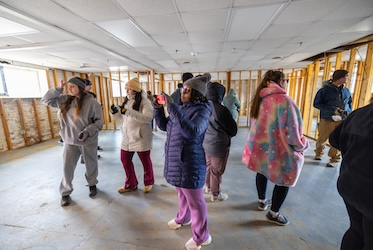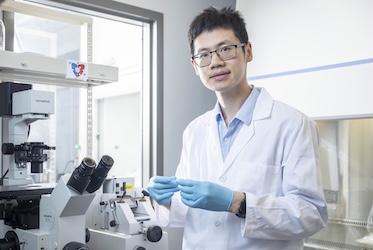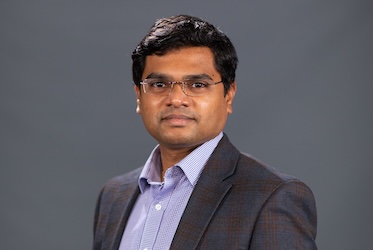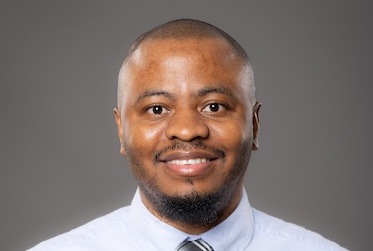
Engineering Students Address Pandemic Needs Through Design
MARIETTA, Ga. | Aug 13, 2020
In times of need, engineers are often called upon to develop innovative solutions that address society’s most pressing issues. Throughout the summer, students in Kennesaw State University’s product realization course tried their hand in positively impacting the ongoing coronavirus pandemic through research and design.
Taught by Dal Hyung Kim, assistant professor of mechanical engineering in the Southern Polytechnic College of Engineering and Engineering Technology, the course took students through a rigorous design process from assessing case studies to implementation, culminating in a final project in which students were to improve an existing product or create an entirely new one to aid one area of the COVID-19 response. Projects ranged in complexity from trash bins that help medical workers safely remove gloves to a fully functional, 3D printed respirator, but all have the potential to make an immediate impact in the world, Kim said.
“Engineers by nature are concerned with making the world a better place through design,” he said. “The goal of this course is to place our students into that mind frame and to think creatively on how they can cultivate change through product realization. I was blown away by the projects and was pleasantly surprised that many went beyond the course requirements to make their products widely available for immediate use.”

The team was inspired to attempt the PAPR after their research found that the market for new personal protective equipment (PPE) designs was crowded, leaving little room for innovation. The team, composed of Brown, Jacob Archer, Chan Chang and Bradley Payne, pivoted when they were unable to find existing plans for a 3D printed PAPR. Despite working remotely, the team managed to print several prototypes using personal printers and donated material. The team finalized their design within days of receiving the assignment.
“Every single one of us was devoted to this project and was truly committed into making this a real thing,” Brown said. “We don’t want this to become something that is only available to people in a bubble. We want this to be available to anyone with additive manufacturing techniques so they can print this, improve the design to suit their needs and put it to use.”

“Through our research, we found there was a large margin for error when it came to removing the gloves,” said Gilbert, whose father also studied mechanical engineering at the University. “People can do everything perfect from social distancing to wearing a mask and gloves, but when it comes time to take everything off, they can still put themselves at risk by not properly removing gloves. With this design, we are helping to protect medical professionals while also eliminating extra steps, allowing them to focus on caring for others.”
Currently completing an engineering co-op at Delta Airlines, Gilbert said the course has presented a unique challenge by pushing him outside of his comfort zone.
“We aren’t medical experts by any means, but I think this showed us that we are able to demonstrate our creativity from a usability and design standpoint, and I take pride in knowing that we have been given the tools to make a difference,” said Gilbert, who was joined by classmates Grant Holton, Noah Isley and Upsana Khan.
Brown, who has completed a co-op at DENSO, the world’s second largest mobility supplier, said his experience in the summer course has been the highlight of his academic career thus far.
“This was genuinely the most fun and engaging course I’ve taken at the University,” he said. “We learned so much about the overall product engineering process throughout the summer semester, and I give all the credit to Dr. Kim for the way he taught it.”
– Travis Highfield
Photos submitted
Related Stories

Kennesaw State architecture, engineering students reimagine Asheville's devastated River Arts District

KSU researcher harnessing digital twin technology to improve heart care

Kennesaw State University researcher, students explore clean energy storage solutions

Kennesaw State assistant professor receives national honor for mentorship in oncology nursing
A leader in innovative teaching and learning, Kennesaw State University offers undergraduate, graduate, and doctoral degrees to its more than 47,000 students. Kennesaw State is a member of the University System of Georgia with 11 academic colleges. The university’s vibrant campus culture, diverse population, strong global ties, and entrepreneurial spirit draw students from throughout the country and the world. Kennesaw State is a Carnegie-designated doctoral research institution (R2), placing it among an elite group of only 8 percent of U.S. colleges and universities with an R1 or R2 status. For more information, visit kennesaw.edu.














